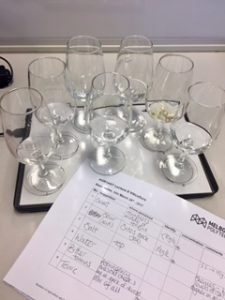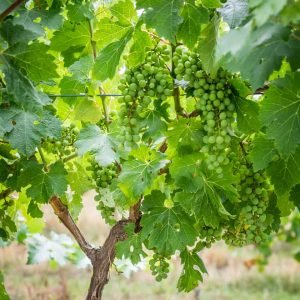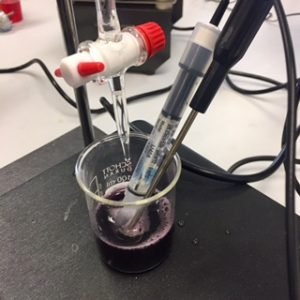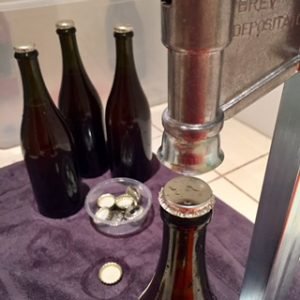This week has not been quite so hectic. We had a week off tractoring for our first lecture in Viticulture. I didn’t get into the winery because I was preparing to bottle my ‘Pet Nat’ and submit my first assignment. Friday was all about wines at every stage of the process – definitely taking the rough with the smooth.
Top 3 things I have learnt this week:
1. Vines are wonderful!

Sensory experiment

Beautiful vine
Viticulture is a marvellous subject. Dealing with the production of those magnificent berries, we were taken on a journey that started thousands of years ago with the first cultivated vines. The main vine used now for wine production is Vitus vinifera, and this wonderful chap is responsible for the 200 varieties of wines sold today all over the world. From Riesling to Shiraz, Nebbiolo to Sangiovese, this little plant has it covered, depending only on the varietal planted.
Because most of the worlds vines are essentially one species, a great deal of them have been subject to the same diseases. Phylloxera is a little beastie that causes scarring in the root tissue of vines and eventually leads to death. Most of the vineyards of Europe and many in Australia have had to be ripped up and replanted because of this small enemy. US varieties, however, are a little more hardy and many viticulturists the world over are using this to their advantage. Most vines in Phylloxera regions are grafted onto American root stocks. So clever!
Over the coming months I will be getting to know vines intimately. I am really looking forward to following them through their yearly cycle of pruning, bud burst and harvest.
2. Sommeliers never wear smellies

The tasting lab
Sounds funny doesn’t it? Try saying it over and over fast… sommeliers never wear smellies, sommeliers never wear smellies, sommeliers never wear smellies…
It’s true. When attending a wine tasting or event it s considered very bad practice to wear perfume or even strong smelling deodorant etc. Whilst it may not hinder your enjoyment or accuracy, it is likely that the notes from your toiletries will be having an adverse effect on your neighbours’ senses. If you wear perfume on a daily basis, it is likely that you no longer smell it as well as you are accustomed to it. This might mean that you slowly increase the amount you put on, but people around you will notice.
So leave out that French cologne when trying to impress at the wine show – or you may end up drinking alone!
3. Wine goes through some funny phases on route to brilliance

Juices, wines and in between
On Friday, us budding vignerons had the opportunity to test and taste a range of wines at different stages in the winery. The aim was to get us used to the aromas and tastes of wines of different sugar, acidity and stages of fermentation.
There are some very strange stages between juice and tipple. As discussed previously, during fermentation the sweetness of the juice diminishes as the sugars are fermented to alcohol. The total acid level, which is often adjusted at the start of fermentation, often stays static, though the pH can rise a little. More acidic wines can taste sour and posses more pronounced tannic properties.
We really had to take the rough with the smooth. Winemakers are used to this. It is their job to take the juices they are given, pick out their best quality (which may be a challenge in itself) and make it shine. Some of the juices had clear potential with well balanced acidity and sweetness with lots of fruit characters. Others had very little to write home about.

Measuring the titratable acidity
Nasty surprises
Then there are the problem ferments… Ferments that do not have enough nutrients for the yeast often give off hydrogen sulphide, which smells like rotten eggs. Recoverable to a point – but vile to taste. Others that have not been plunged enough (i.e. our class Shiraz) had picked up an acetobacter infection. They smelled (and tasted) like someone had dropped a bottle of nail varnish remover in their vinegar. Whoops! This is very difficult and expensive to rectify. In this case the batch had to be binned.
Other samples were undergoing a secondary ferment called malolactic fermentation, and they smell a little mousy or malty. This is perfectly normal and they are restored to full health in a few days.
On the bubble…

Bottling the Pet Nat
Bubbling away in the background of this week was my ‘Pet Nat’ – I turned half of the Shiraz juice collected last Sunday to make my class assessment wine into a sparking Pet Nat. These lightly fizzy wines have to be bottled at exactly 14g/L of sugar to ensure the right amount of gas is produced. This in itself has many challenges. However, so far none of the bottles have exploded! Thanks to my ever patient husband who had to share his bathroom with another ferment and have many of his bottles evicted from our wine fridge. This will not be the last time this year either. Ferment three is almost ready to go.
Our home brew was racked ready to be bulk aged for at least 6 months. I discovered that I have a long way to go in training my wine senses, and found out that the shape of the glass really does affect the experience.
Stay posted to hear all about it!
This week we have our final tractor lesson… will I finally get the hang of reversing that damn trailer?!

